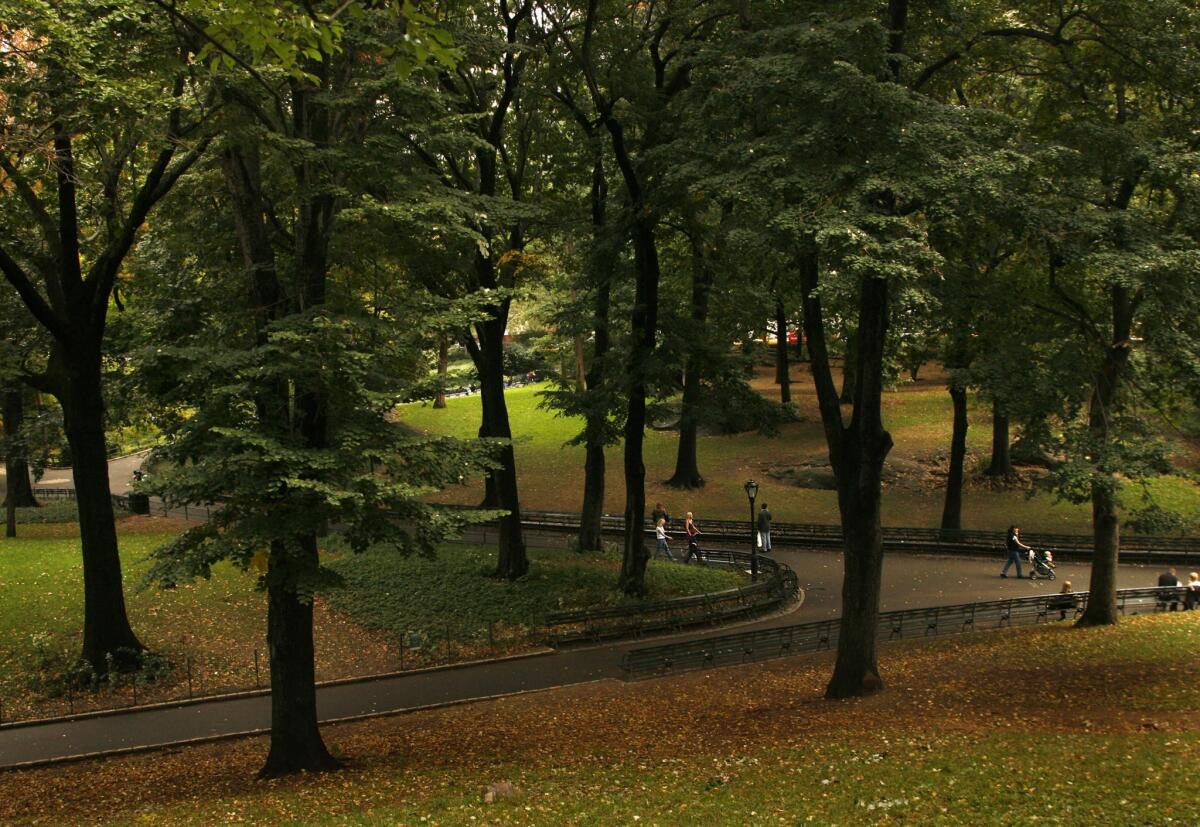New York model could help L.A. residents connect to our park

Something happened recently that made me see how estranged I am from my cityâs parks. At best, I have become a distant admirer.
The orbit of my life has shrunk and is now proscribed by a desk downtown and a commute on the freeway.
My last intimate experience with a park came a few years ago when I used a pick and shovel to plant the Jack Smith memorial tree in honor of my father at Danteâs View in Griffith Park.
It would have been a tall pine today. But one day I got a call from soon-to-be City Councilman Tom LaBonge, who was then the voluntary âmayorâ of Danteâs View.
Vandals had chopped the sapling down, he told me. Sadly, we both moved on and never returned to replant the tree or install the marker we had planned to place beside it.
In the city of the automobile, I canât be the only one whoâs lost such a valuable connection.
Can the people of a great city sustain a lifetime affair with its parks?
It was a visit to New York that gave rise to this question. I had an hour to kill and couldnât resist the lure of Central Park. It was animated on a weekday afternoon in a way that not even the carousel at Griffith Park can be on a Sunday.
There were suited office workers eating bag lunches, young mothers pushing strollers, phalanxes of uniformed elementary students, sunbathers stretched over giant rocks, clutches of tourists speaking different languages and everywhere the elderly, sitting on park benches watching the parade go by.
I took a seat to do the same.
The bench was the traditional type: dark green wooden slats supported by concrete legs. It was stout and freshly painted, like the hundreds of others lining the parkâs walkways.
Affixed to its back was a stainless steel plaque, slightly larger than an index card, engraved with a message from Alfred âBudâ Klauber: âIn recognition of a lifelong love affair with this park and this incomparable city.â
I took out my phone and clicked a picture. Then I moved to the next bench and the next, reading each inscription.
They were elliptical: âEvery second of Every Minute.â
Irreverent: âFor Noodling.â
Self-promotional: âA gift to New York from the Helmsleyâsâ
Romantic and bittersweet, sometimes in the same breath: âTo our Meredith Blume â She wore scarlet begonias tucked into her curls. I knew right away she was not like other girls.â
All of them expressed a bond between the park and its city and people.
I was surprised to see that some of the plaques were dated from the 1990s but still looked new.
Something here was different from my experience in Los Angeles.
Central Park, it turns out, has its own quasi-independent government: the Central Park Conservancy. A nonprofit formed in 1980, it now manages the park under contract with New York and raises 75% of the parkâs annual budget of $57 million.
Within the conservancy, according to its website, thereâs a committee of âdynamic women who are dedicated to the beautification and preservation of Central Park.â
Among the Womenâs Committeeâs diverse fundraising activities is selling plaques.
Itâs a simple arrangement. For $7,500 anyone can adopt a bench and have a message posted on it. The Womenâs Committee promises to maintain it â forever.
The program started in the late 1980s. To date about 3,900 of the parkâs 9,000 benches have been adopted.
Elizabeth Kaledin, the committeeâs spokeswoman, acknowledged that someday all the benches will be adopted. At that point, proceeds from the fund will pay the continuing maintenance.
On my return from New York, my Central Park experience motivated me to take my first stroll through Grand Park, the Civic Centerâs 2-year-old grassy fairway joining City Hall and the Music Center.
According to its rather sparse website, Grand Park aspires to provide âAngelenos of all walks of life a place where they can come together to celebrate, reflect, and shape the future, in one central gathering place.â
I found its 16 acres a valiant antidote to the Civic Centerâs concrete and asphalt, just as Central Park is for Manhattanâs skyscrapers.
I paid special attention to its benches. Constructed of lightweight metal and painted whimsical fuchsia, theyâve been praised for exuding the mobility and improvisational freedom of Los Angeles.
Would I invest $7,500 in one to declare my love for Los Angeles in perpetuity? I donât think so. They donât look very permanent.
But there probably are plenty of others who would â if the city could commit to them to maintain the benches forever.
A promise of a year or so would only be a lease. Forever â or least a lifetime â is commitment. It means a life is entwined with the life of the city.
It would probably take a conservancy â and a group of dynamic women â to build that kind of trust.
Thatâs no small prescription. But without it, who would have the faith in the future that led a presumably young couple to write 15 years ago: âEllie and Gene Goldberg sit here, June 28, 1997.â
When itâs for a lifetime, even one day in the park is worth proclaiming.
More to Read
Sign up for Essential California
The most important California stories and recommendations in your inbox every morning.
You may occasionally receive promotional content from the Los Angeles Times.











